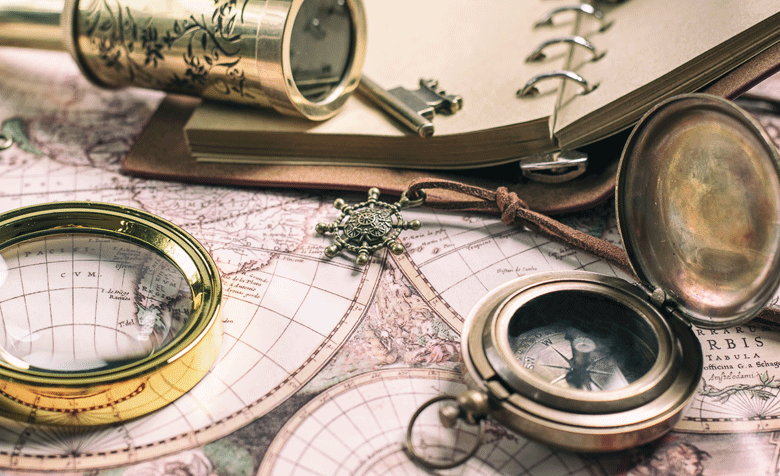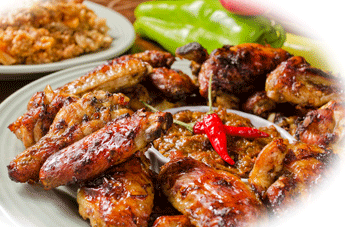 Christopher Columbus
Christopher Columbus
Many people believe the Chilli has its origin in India or somewhere in the Far East. In fact, Chillies have their origin in a region in Bolivia. They then spread to surrounding countries in South America. At one time, not that long ago, Chillies weren’t known outside of the Americas at all
If you told most people, including many Chinese and Indian people, that Chillies originally came from South America, they wouldn’t believe you. Chillies have become so entrenched in their cultures that many of these people might find it difficult to believe they aren’t native to their homelands.
become so entrenched in their cultures that many of these people might find it difficult to believe they aren’t native to their homelands.
To get to how they think like this needs a bit of background. In the Middle Ages, spices like black pepper were costly and sometimes hard to procure. With such scarcity and demand, phenomenal profits were to be made in finding a route to the source of supply.
This was one of the most important factors in the history of the Chilli. Had black pepper and other spices not been so expensive, exploration journeys like Christopher Columbus might never have happened. Furthermore, these voyages of discovery cost so much, it sometimes took the resources of the monarchy to finance them
In 1492, Christopher Columbus, with the king of Spain’s sponsorship, set off on a voyage of discovery to find a route to the source of these spices. He based the whole journey on a theory that by travelling West, he would reach the East’s Spice Islands. Unfortunately, this belief proved incorrect. Instead of arriving in India, he landed up in the Bahamas (in the West Indies), where he encountered the Chilli for the first time. Thinking it was another form of black pepper, Christopher Columbus called it just that “Pimiento” (Spanish for pepper). Through his naming of the Chilli as a pepper, it is referred to in parts of the world as hot pepper or Chile pepper.
How Chillies got to the Caribbean
The first part of the Chillies’ history began in South America. The Chilli found its way to the West Indies from South America by either migrating birds or Paleo Indian migrants. The Taino were part of the Arawak speaking people. According to one group of scholars, the Taino had their origins in central South America. [ source Wikipedia] .  They had migrated from there to the Orinoco valley on the North coast of Venuezuala. From there, they found their way (following the Lesser Antilles north to the Greater Antilles) to the Caribbean, where they settled as an indigenous people
They had migrated from there to the Orinoco valley on the North coast of Venuezuala. From there, they found their way (following the Lesser Antilles north to the Greater Antilles) to the Caribbean, where they settled as an indigenous people
The Taino had made the journey to the West Indians in big canoes, in which they carried all their provisions. One of these provisions they carried was Chillies. These Chillies (most probably of the C chinense or C frutescens species) were one of their favourite foods. They had been eating them for thousands of years. Indeed, they were one of the first people to eat Chillies. The Amazon basin in Central America is thought to be the birthplace of Chillies. Once the Taino arrived in the Caribbean, they started cultivating Chillies. Soon they were to be found all over the region.
Portugal and Chillies
In a subsequent trip to the West Indies, Columbus consigned Chillies back to Europe with him. This was the second part of the history of the Chilli (outside of the Americas). They had not been seen in this part of the world before this, and considered somewhat exotic. So when Columbus arrived in Spain with Chillies, they were certainly not an immediate hit. Old habits die hard. So while getting a lot of interest, the Chilli did not find immediate popularity among Europeans. Instead, Chillies were grown mainly in Portuguese and Spanish monasteries as a botanical curiosity [ Wikipedia] rather than a culinary delight.
Interestingly, it was Portugal and not Spain that introduced Chillies to the regions of the world where the spice is most popular today. While not being a hit in their own country, Portuguese traders recognised the potential of selling Chillies to other spice loving parts of the world. They managed to procure seeds from (an unknown) Spanish source, and before long were growing Chillies.
In her book “The Pepper Trail”, Jean Andrews concluded the Portuguese began planting Chillies in their overseas territories in the late fifteenth century. From there, they took the spice with them in their expeditions to the Far East and the rest of the world. Quite rapidly, countries like India – a black pepper source – used the Chilli in preference to it. While all these countries have always enjoyed spicy foods, before being introduced to Chillies, they used spices like Indian long pepper, Black pepper, Korean pepper and Ginger to give piquancy to their dishes.
How Chillies became popular
Within 100 years of Columbus bringing the Chilli back from the Caribbean, it was widely used in Africa and Asia. Countries like China, Bhutan,India, Indonesia, Korea, and Thailand quickly added it to their flavour arsenal. Once again, it was the Portuguese to a greater or lesser extent responsible for their distribution.
The Portuguese also introduced Chillies to their colonies in Africa, and other parts of the world. Chillies were cultivated and widely used in most Portuguese colonies, including Brazil, the Azores, Mozambique , Angola and Portuguese Macau. (which borders China)
These tastes percolated back to the motherland, and in time dishes like Piri-Piri chicken became national dishes. Similarly, hot sauces like Piri-piri sauce from these colonies began to be found on the tables of almost every Portuguese household. The Portuguese adopted Chillie in a big way
Chillies started becoming so popular that they even began finding favour (albeit the milder varieties) in the Middle East and Mediterranean countries, like Turkey and Greece.
Where Chillies are today
Today, the use of Chillies is widespread throughout the world. It is said that up to a quarter of the planet’s population eats them every day. There are few, if any, countries on the globe where  Chillies do not play a part in regional cuisine. So much so, that in some countries like Mexico, India, Indonesia and Bhutan, few meals go by without Chillies’.
Chillies do not play a part in regional cuisine. So much so, that in some countries like Mexico, India, Indonesia and Bhutan, few meals go by without Chillies’.
In the West, where Chillies took longer to take root, they have started to become more popular. Chillies are now found quite easily on supermarket shelves and online in snacks, dips, hot sauces, BBQ rubs and a whole lot more. They have become everyday. The globalisation of the world means that cuisines in which the Chilli has been routinely used for hundreds of years have become part of regular Western cuisine. Curries from India, Burritos from Mexico, Jerk chicken from Jamaica are all dishes that most Westerners are aware of and enjoy as part of their usual diet. This trend is likely to grow even more as the history of the Chilli evolves, and more people get to know this great gift from nature.
Reference: Jean Andrews, The Pepper Trail, 1999, ISBN I-57441-070-9
Image credits:
Joseph Sohm / Shutterstock.com
Marco Farouk Basir/ CC BY-SA 3.0 /, via Wikimedia Commons
